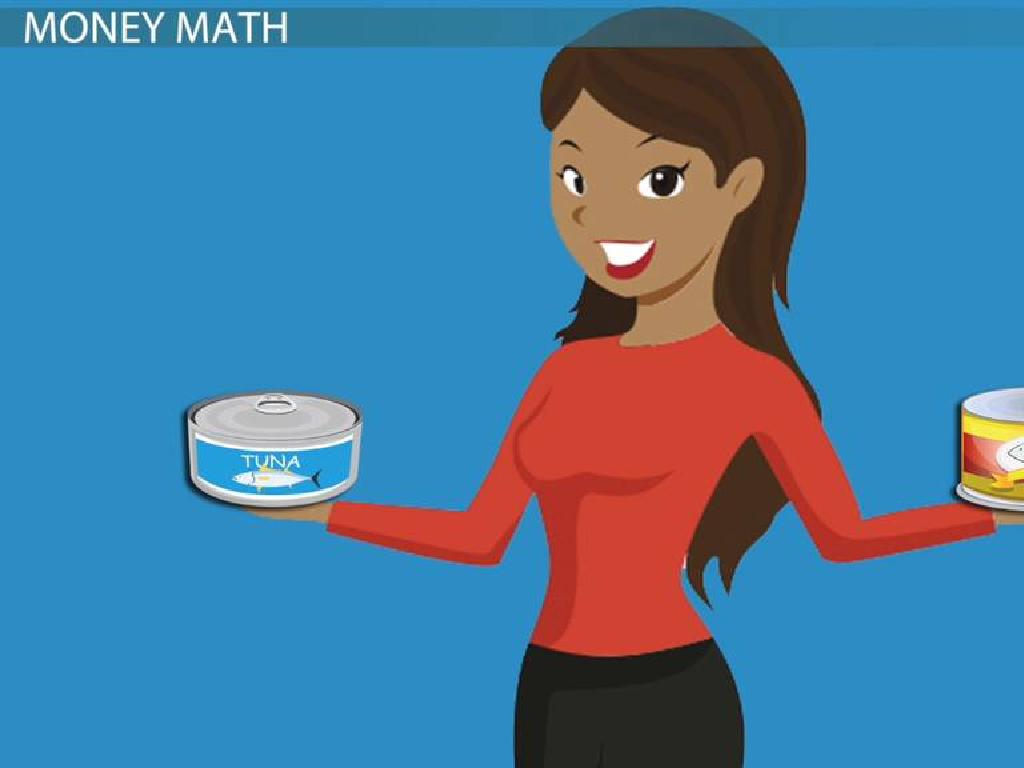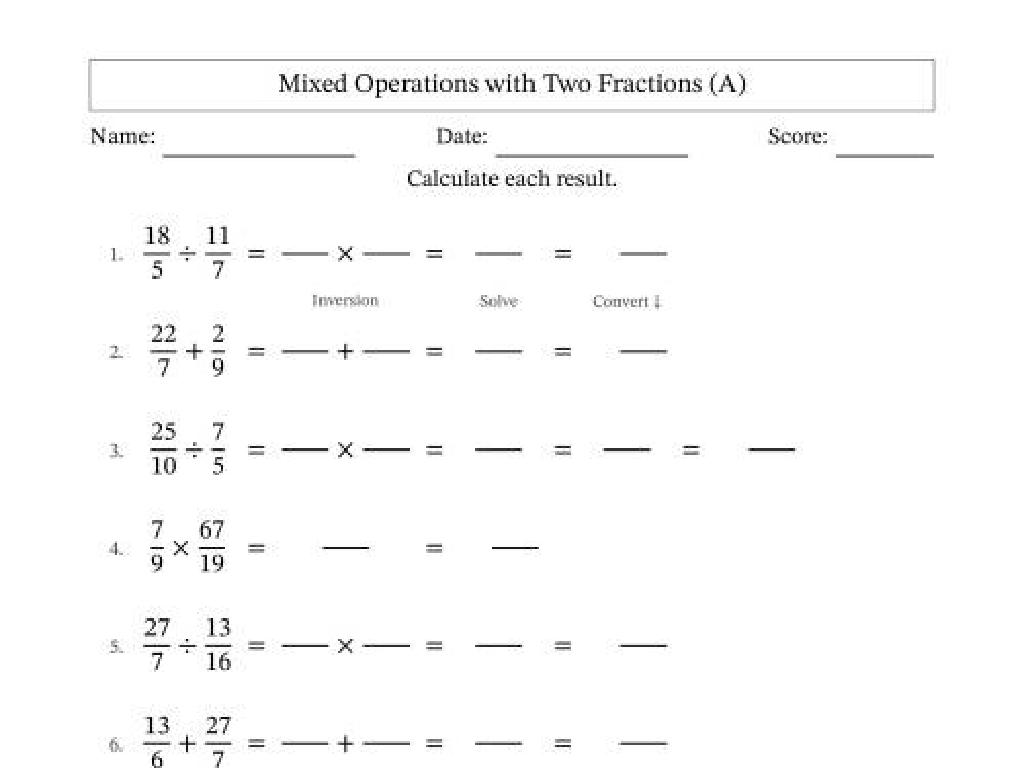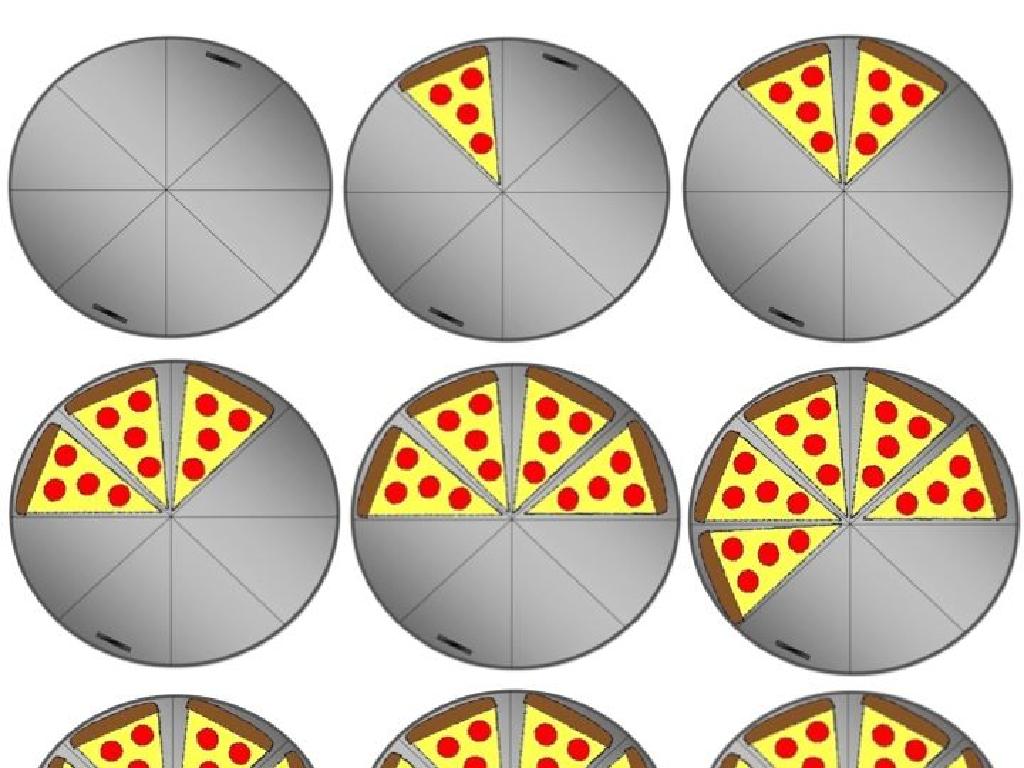Identify How Particle Motion Affects Temperature And Pressure
Subject: Science
Grade: Sixth grade
Topic: Particle Motion And Energy
Please LOG IN to download the presentation. Access is available to registered users only.
View More Content
Particle Motion and Energy
– Explore the world of particles
– Relation: particle motion & temperature
– Faster particles mean higher temperature
– Particle motion’s effect on pressure
– More particle motion leads to increased pressure
– Objectives of today’s lesson
|
This slide introduces the concept of particle motion and its relationship to temperature and pressure, which are fundamental aspects of physical science. Begin by explaining that all matter is made up of tiny particles that are always in motion. The speed of these particles is directly related to the temperature of the substance; the faster the particles move, the higher the temperature. Similarly, when particles move and collide with the walls of their container, they exert pressure; more motion results in greater pressure. The lesson will delve into these concepts, providing students with a foundational understanding of how particle motion affects the physical properties of substances. Engage the students with examples like the movement of molecules in a heated pot of water or the increase in pressure in an inflated balloon.
Particle Motion: Temperature and Pressure
– All matter consists of particles
– Particles are always in motion
– The faster they move, the higher the energy
– States of matter affect particle arrangement
– Solids have tightly packed particles, while gases have particles that are far apart
– Motion influences temperature and pressure
– Increased motion raises temperature and can lead to higher pressure in a closed container
|
This slide introduces the concept that all matter is made up of tiny particles that are in constant motion. The state of matter solid, liquid, or gas determines how these particles are arranged and how they move. In solids, particles are closely packed and vibrate in place, while in gases, they move freely and are far apart. The temperature of a substance is a measure of the average kinetic energy of its particles; the more they move, the higher the temperature. Similarly, pressure is related to how often and forcefully the particles collide with the container walls. In a closed system, increasing particle motion (by heating, for example) can increase pressure. Encourage students to think about how heating a substance might change its state of matter due to particle motion.
Temperature and Particle Motion
– Temperature indicates particle speed
– The measure of the average kinetic energy of the particles in a substance.
– Higher temperatures, faster particles
– As temperature increases, particles gain energy and move more quickly.
– Examining states of water
– Observe how water changes from solid to liquid to gas with temperature.
– Ice vs. Water vs. Steam
– Compare the particle motion in solid ice, liquid water, and gaseous steam.
|
This slide aims to explain the relationship between temperature and particle motion. Temperature is a measure of the average kinetic energy of the particles in a substance, meaning it tells us how fast the particles are moving. At higher temperatures, particles have more energy and move faster. To illustrate this concept, we use water as an example because it can be found naturally on Earth in all three states: solid (ice), liquid (water), and gas (steam). As water heats up, its particles move faster, changing from ice to water and then to steam. This is a great visual example for students to understand how temperature affects particle motion and the state of matter. During the class, demonstrate this with a simple experiment of heating water to see the transition from ice to steam, if possible.
Pressure and Particle Motion
– Pressure: force from particle collisions
– More collisions result in higher pressure
– Example: inflating a balloon
– When you blow air into a balloon, particles collide more with the walls, increasing pressure
– Understanding pressure in gases and liquids
– Explore how particle motion affects pressure in different states of matter
|
This slide introduces the concept of pressure as it relates to particle motion. Pressure is the result of particles colliding with surfaces. When there are more collisions, the pressure increases. An everyday example is inflating a balloon; as more air is blown into the balloon, the number of air particles inside increases, leading to more frequent collisions with the balloon’s inner surface, thus increasing the pressure. It’s important for students to understand that this concept applies to all states of matter, and they should consider how temperature affects particle motion and pressure in both gases and liquids. Encourage students to think of other examples where increased particle motion results in higher pressure, such as shaking a soda can.
Particle Motion: Temperature and Pressure
– Temperature’s effect on pressure
– In a closed container, higher temperature increases particle speed, raising pressure
– Real-life: The pressure cooker
– Pressure cookers seal steam inside, raising the temperature and pressure to cook food faster
– Graphing temperature vs. pressure
– A graph shows that as temperature goes up, pressure also rises if volume is constant
|
This slide aims to help students understand the direct relationship between temperature and pressure in a closed system, using kinetic molecular theory. As temperature increases, particles move faster and collide more often with the container walls, which raises the pressure. A pressure cooker is a practical example of this concept, where steam is trapped, increasing the internal temperature and pressure, thus cooking food more quickly. When graphing this relationship, students should see a positive correlation between temperature and pressure, which is an important concept in understanding gas laws. Encourage students to think of other examples where increased temperature might lead to increased pressure, such as in car tires on a hot day.
Hands-On Experiment: Temperature and Pressure
– Measuring temperature changes
– Observing pressure variations
– List of materials needed
– Thermometer, sealed container, heat source
– Safety protocols
– Wear safety goggles and gloves
|
This slide introduces a hands-on experiment for students to understand the relationship between particle motion, temperature, and pressure. Students will measure how temperature changes in a sealed container when exposed to a heat source and observe the resulting pressure changes. The materials needed for this experiment include a thermometer to measure temperature, a sealed container to observe pressure changes, and a heat source to induce the changes. Emphasize the importance of safety by ensuring all students wear protective gear such as safety goggles and gloves. The teacher should prepare four to five different setups with varying amounts of water or different heat sources to show how different conditions affect temperature and pressure. This will help students grasp the concept that increased particle motion (from heat) results in higher temperatures and pressure inside a container.
Class Activity: Particle Dance
– Simulate particle motion through dance
– Move slowly to represent cold temperatures
– Particles move slower in cold conditions, like slow dancing
– Move quickly for hot temperatures
– Particles move faster when heated, like fast dancing
– Observe changes in ‘collisions’ with speed
– Faster movement means more collisions, demonstrating pressure changes
|
This activity is designed to help students visualize and understand the concept of particle motion in relation to temperature and pressure. By simulating particles with their own movements, students can physically experience the difference between high and low energy states. For cold temperatures, students will move slowly and have fewer ‘collisions’, representing how particles are less active when cold. As the temperature ‘increases’ and they move faster, they’ll ‘collide’ more often, illustrating how particle motion affects pressure. Teachers should guide the activity, ensuring safety and helping students make connections between their movements and particle behavior. Possible variations include changing the size of the ‘container’ (classroom space) to show how pressure changes with volume, or having different groups represent different states of matter.
Conclusion: Particle Motion, Temperature, and Pressure
– Recap on particle motion
– Particles move faster when heated and slower when cooled
– Temperature and pressure relationship
– As particle speed increases, temperature rises and so does pressure
– Everyday applications
– Insulation effectiveness, weather patterns, cooking methods
– Open floor for questions
|
As we conclude, review the core concepts of how particle motion affects temperature and pressure. Emphasize that particles move faster when heated, which increases both temperature and pressure. This understanding is crucial in everyday life, affecting everything from the insulation in our homes to the way we cook food. Discuss practical applications like weather prediction and engine functionality. Finally, encourage students to ask questions or share any interesting observations they’ve made during the lesson to solidify their understanding and engage with the material.
Homework: Particle Motion in a Heated Balloon
– Write a paragraph on heating a balloon
– Draw particle motion diagrams
– Show particles moving faster at higher temperatures
– Reflect on temperature changes
– Relate faster motion to increased pressure
– Get ready to discuss in class
|
This homework assignment is designed to help students understand the relationship between temperature, particle motion, and pressure. Students should write a descriptive paragraph about what happens to the air inside a balloon when it is heated, focusing on the concept that heating increases particle motion, which in turn affects pressure. They should also draw diagrams illustrating how particles move at different temperatures, showing more energetic and spaced-out particles at higher temperatures. Encourage students to think critically about how temperature changes can lead to changes in pressure. In the next class, be prepared to facilitate a discussion where students can share their findings and deepen their understanding of these concepts.






